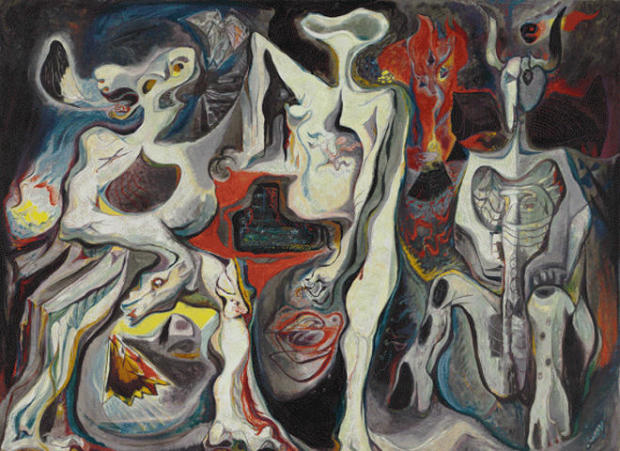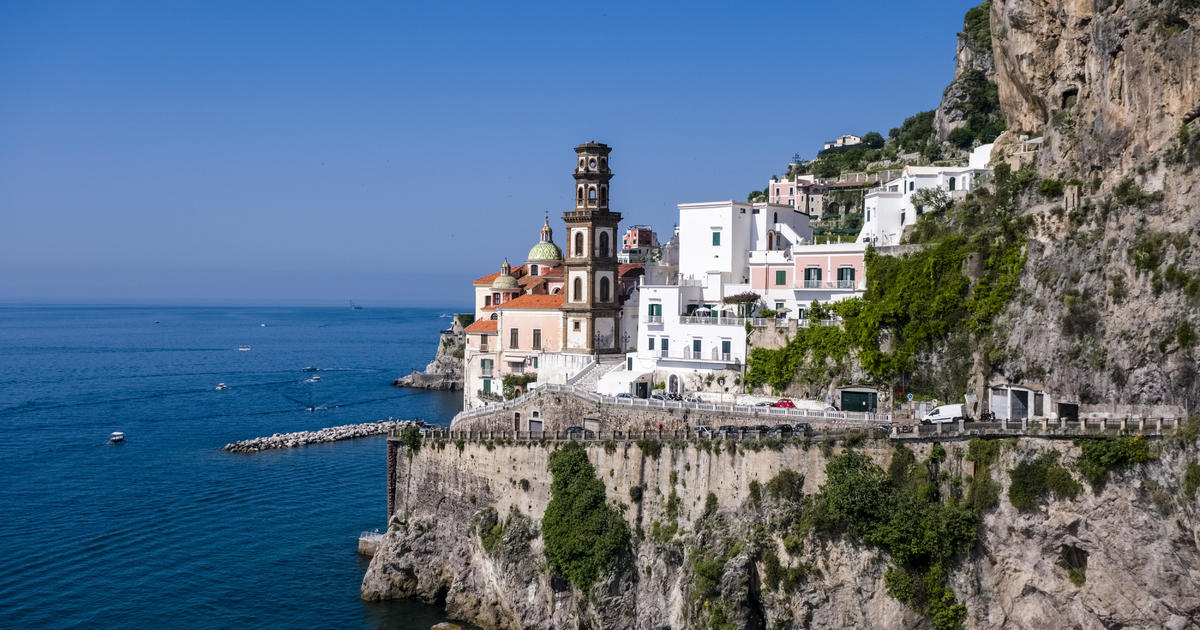Surrealist art and war
Surrealist art is full of dreamlike images – but not all those dreams were sweet, as evidenced by a traveling exhibit called "Monsters and Myths," currently at the Frist Art Museum in Nashville, after stopping at the Baltimore Museum of Art, where Oliver Shell is a curator.
"This was not escapist art," Shell said. "It definitely was connected to the history that was taking place as they lived it."
The show, which features 90 works, explores how the real-life monstrosities of war in the 1930s and '40s bred metaphorical monsters in paintings and sculptures.
"Monsters could be the totalitarian leaders," said Shell. "They're also metaphors for those inner aspects where the propensity for evil lurks, which were being explored by the surrealists.
"It was hard to ignore the fact that Hitler in 1933 becomes chancellor, and then that the Spanish Civil War starts in 1936. All these facts just keep building up, creating a sense of despair and horror amongst these artists."
Artists like Spaniard Salvador Dalí, who painted "Soft Construction with Boiled Beans (Premonition of Civil War)" just as his home country was on the brink of civil war.
"It grabs you when you walk in and see this," said correspondent Serena Altschul. "It's really, I have to say, scary."
"And the monster literally pulls itself apart, like the country is being pulled apart by civil war," said Shell.
German-born Max Ernst, who fought in the trenches during World War I, began his painting "Europe after the Rain II" in France in 1940, before leaving Europe and arriving in New York in 1941, before driving out West.
"So, he starts this project in the middle of the turmoil and chaos of almost not being able to leave Europe?" asked Altschul.
"Yes," said Shell. "'Europe After the Rain II' is supposed to be sort of about the wasteland of Europe, and the other side is the American West."
Like Ernst, many surrealists would become refugees, fleeing to America for safety. André Masson was another.
Shell said of Masson, "He had had a Jewish wife, and two Jewish children. And he was on every list you'd wanna not be on. And so, these artists had to get out. And they bring their art with them. And sometimes, that delays the finishing of the works. And it's part of the experience of what they went through."
"So, you can feel the urgency in what they were going through in so many different ways in their lives?" asked Altschul.
"Certainly."
These works would become masterpieces of the Surrealist art movement. a movement that encouraged artists to explore the human psyche and challenge our imaginations with their personal interpretation of history.
Shell said, "I think that it's interesting to get sort of a different perspective on history. We all know the story of World War II and America's military involvement. But artists are also living through these times, and processing things. And that's a fascinating way to look at history, too."
For more info:
- "Monsters & Myths: Surrealism and War in the 1930s and 1940s" at the Frist Art Museum, Nashville (June 21-September 29)
- Exhibition Catalogue: "Monsters and Myths: Surrealism & War in the 1930s and 1940s" (Rizzoli Electa), in Hardcover, available via Amazon
Story produced by Sara Kugel.





